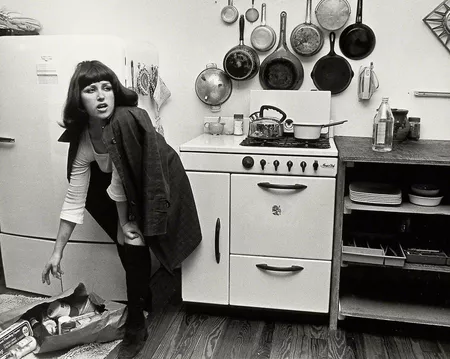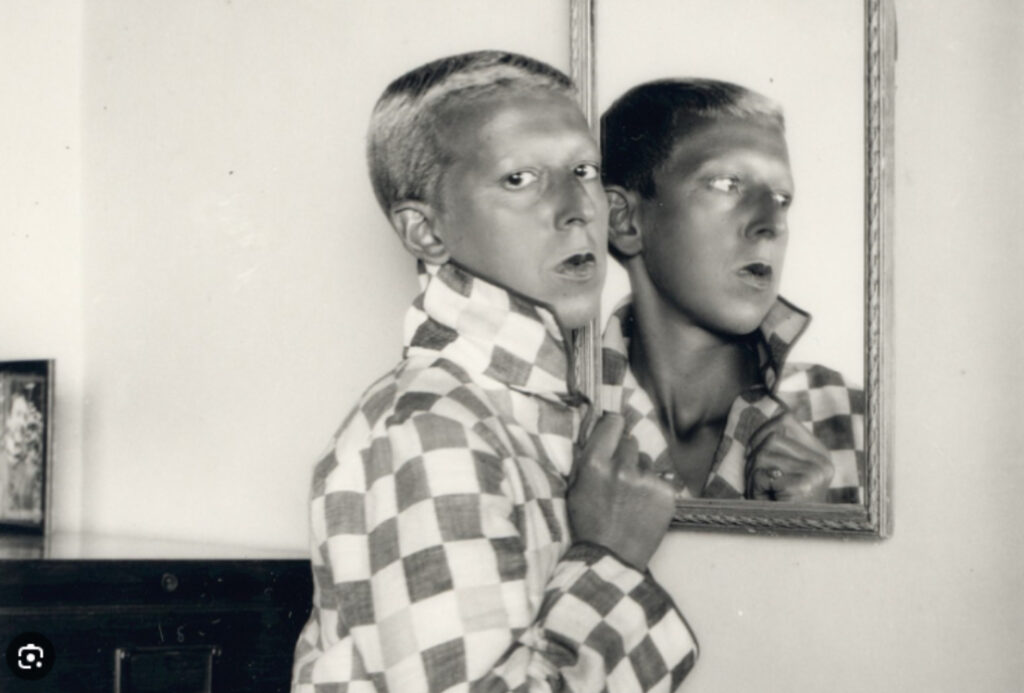Cindy Sherman

Cindy Sherman is an American Artist, born in 1954, whose work generally consists of self portraits where she photographs herself in a variety of contexts and as different characters. Sherman often portrays herself as stereotypical women in her photographs, resembling scenes from 1950s and 1960s films. Shortly after moving to New York at the age of just 23, Cindy Sherman produced her ‘Untitled Film Stills’ (1977-1980) where she dressed up as imaginary characters in various settings. Some of these characters include the unhappy housewife, the jaded seductress and the jilted lover which are all mainly based off of those from mid 20th century B movies. Cindy Sherman mentioned “I wanted them to seem cheap and trashy, something you’d find in a novelty store and buy for a quarter”. This shows that her images were often taken and made to mimic advertisements and promotions for movies at the time. These film stills remain her best-known works and, once released, they immediately became a point of discussion for feminism, postmodernism and representation. Sherman works in series and most of her work have recurring themes. Additionally, she had an exhibition made for her work in 2012 at the Museum of Modern Art displaying work from throughout her career. Finally, a quote I find interesting from Cindy Sherman is “None of the characters are me. They’re everything but me.” because it explains that in every photo and as every character she dressed up as, she never showed her true self which creates a sense of mystery. This also adds to the sense that women in media are often portrayed as someone else, rather than who they really are, therefore, the things you see in the media are often fake and just for show.

This is one of Cindy Sherman’s photographs where she appears to be dressed up as a house wife. This impression is caused by the fact that she is in a kitchen and appears to be unpacking her food shopping. Due to the photo being monochrome and slightly pixelated, you can tell it was taken on an older camera which also indicates how its inspiration would have come from the time when women were less superior to men. The character she is imitating in the photo, an house wife, almost looks as if she is looking at someone, perhaps her husband, and appears fed up or annoyed. I personally admire this photo because I believe that it definitely tells a story and relates a lot to toxic feminism (the belief that woman have to look and act a certain way, usually doing jobs around the house and looking after her family). Additionally, I find it admiring how Cindy Sherman would set up the camera and photograph herself, instead of someone else, which is something I would like to try for my own photoshoots.
Claude Cahun

Claude Cahun, born Lucy Schwob, was a French artist, photographer, surrealist and writer. They were born in 1894 in Nantes, France and died in 1954 in Jersey Channel Islands. Cahun is best known for their self portraits and photo montages where they explored themes of identity. They were associated with the surrealist movement and were an activist who challenged traditional societal norms and gender roles throughout their work. Cahun moved to Jersey in 1937 with their stepsister and lover Marcel Moore. Claude Cahun was later imprisoned and sentenced to death for resistance during the Occupation in 1944. Although Claude Cahun survived, most of their work was destroyed by the Nazis. Cahun’s work is represented within the Jersey Heritage Trust collection and they have become and important figure in the history of queer and feminism art.

This photo of Claude Cahun, in my opinion, is one of her most important photographs that appear to question the societal norms of being female. Not only did she change her name but she also shaved her head to challenge gender roles and express herself for who she is. In this photo, Claude Cahun is presented in a very masculine way, however, there are also hints of femininity which makes you question whether you are looking at a male or female. Either way, she appears confident with who she is by her facial expressions and appearance within the mirror but also slightly constrained with the collar of the jacket hiding herself. This gives off the impression that she feels like she can’t fully show her true identity, the reflection in the mirror. Additionally, this may be highlighted by the fact that her gaze is directly towards the camera but in the mirror she is looking the other way because her true identity can’t be shown to society. I personally admire this photo because it seems to be very thought out and gives off many different impressions, making the viewer really have to think deeply about it.
Comparison
Overall, Cindy Sherman and Claude Cahun’s work relate to each other through the fact that they explore female stereotypes and take selfies rather than photos of someone else, however, Claude Cahun appears to go against these stereotypes where Cindy Sherman tries to oblige to them. Similarly, both the artists explore identity as Cindy Sherman dresses as different characters and never herself but Claude Cahun shows hints of their identity through their characters and appearance.
